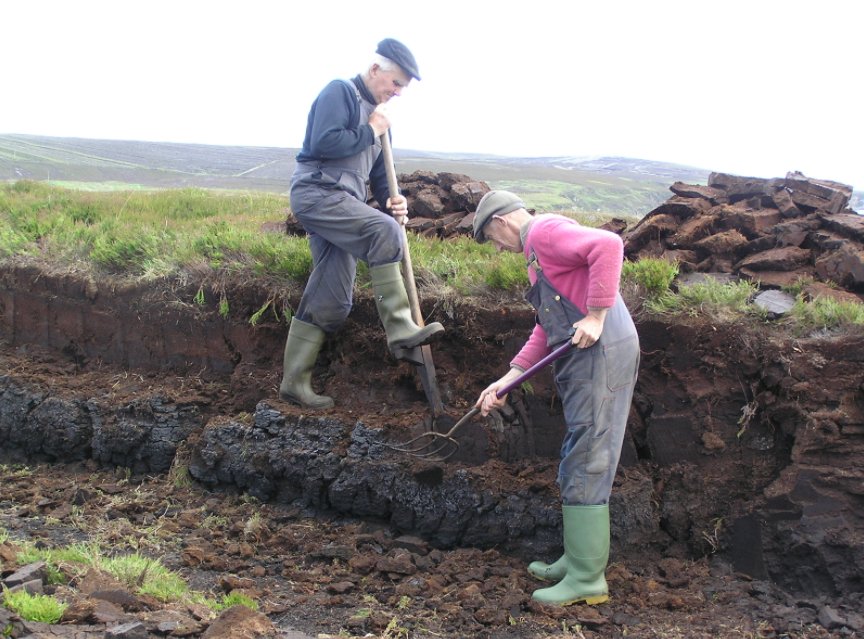Peat
Photo©Derek Mayes https://creativecommons.org/licenses/by-sa/2.0/
Image ©Julia Campbell
Peat cutting now and then
In a treeless land peat was one of the few reliable sources of fuel. The peat, mainly decomposing sphagnum moss, started forming not long after the end of the last Ice Age, 10,000 years ago. When further climate cooling caused the ancient pine forests to collapse from around 3000 BC the ground became further saturated, trapping more semi-decomposed vegetation in a blanket bog.
Cut, dried and stacked from late spring to summer it became the staple fuel of the Highlands and Islands. The peat roads were built in the 19th century to enable the crofters to access their peat banks and retrieve the fuel. From the 1890s to WW1 the Congested Districts Board, a forerunner of the HIE, funded improvements to the roads which were carried out by the crofters.
Peat was harvested all over Europe from Medieval times to provide fuel if timber was in short supply. The famous Norfolk Broads in England are the flooded remains of medieval peat workings. Cut, dried and stacked from late spring to summer it became the staple fuel of the Highlands and Islands. The peat cut and dried in this period had to fuel the community right through the winter until the next lot could be dug. The fuel was free but the work was back-breaking.
As with many other activities the cutting of the peats was a communal activity involving all the family and whole townships. Each township would have its own peat bank and in late April the turf would be cut and de-haired (slicing off the top turf) to expose the peat below. The peats would then be cut by the ‘tusker’ into long wet slabs of peat which are then thrown up onto the clean ground to be roughly stacked for the initial drying process (around 3 weeks). The peat would usually be cut in three layers, becoming more compressed and darker with each layer. The dark base layer makes the best material for burning when dry. Later the peat would be re-stacked into little triangular ‘stooks’ to allow it to dry all around before being carried back to the croft house in basket creels.
Peat cutting has almost died out on the mainland now. It’s still fairly common in the Western and Northern Isles and crofters retain the rights to win peat. However readily available sources of cheap fuel which require much less effort have taken over.
There is also now more awareness of the environmental importance of the Scottish peatlands.
According to NatureScot peat soils contain 25 times as much carbon as all other plant life in the UK. The carbon stored in Scotland’s soils is equivalent to over 180 years of the country’s greenhouse gas emissions at current rates. Restoration of these vital carbon sinks is now being prioritised over the extraction of fuel.

